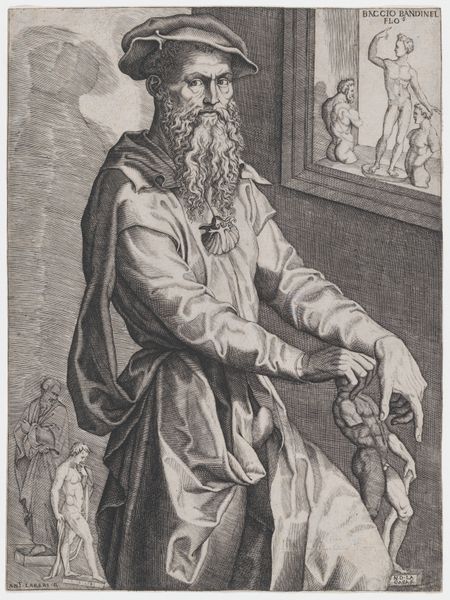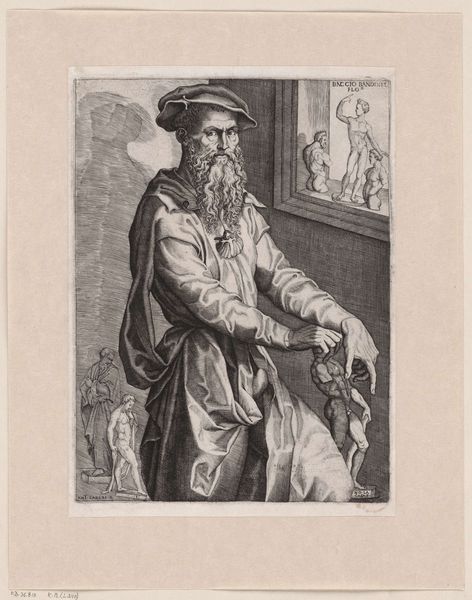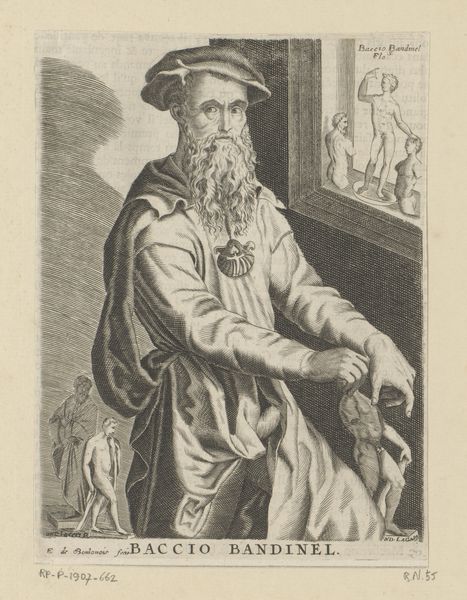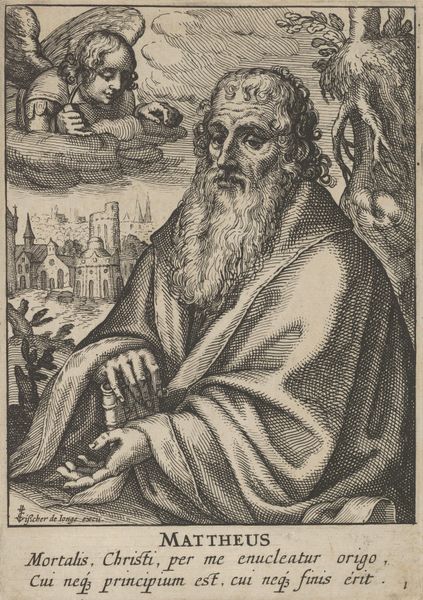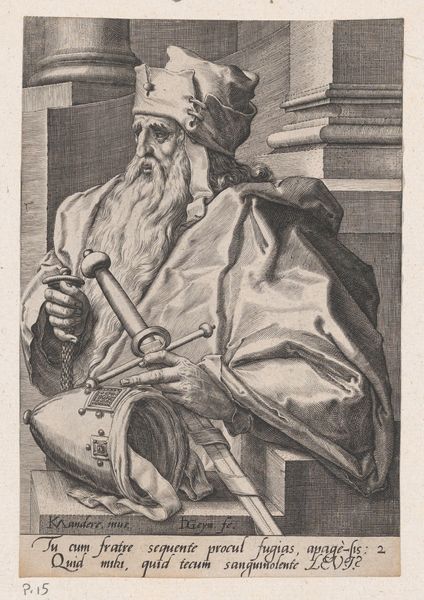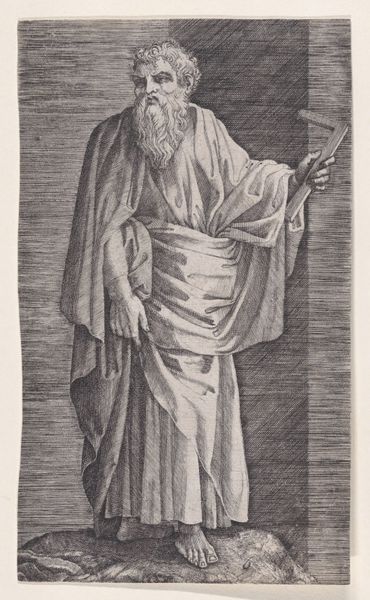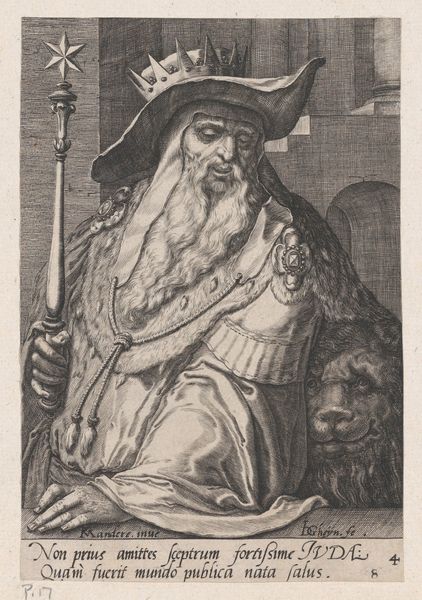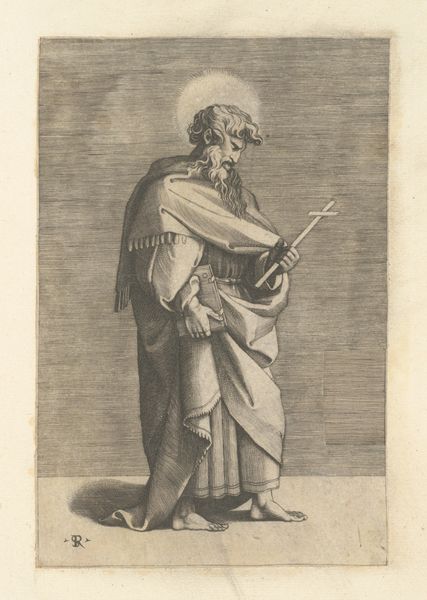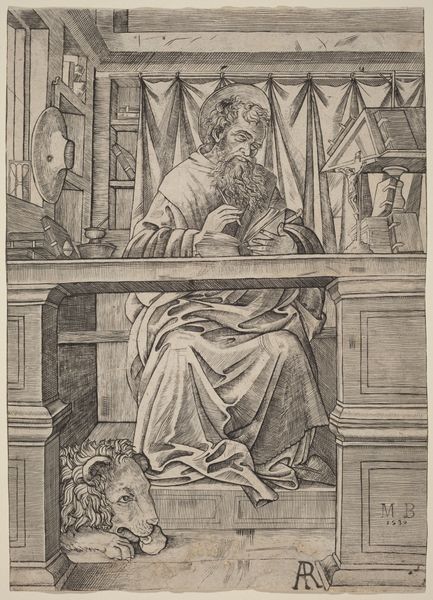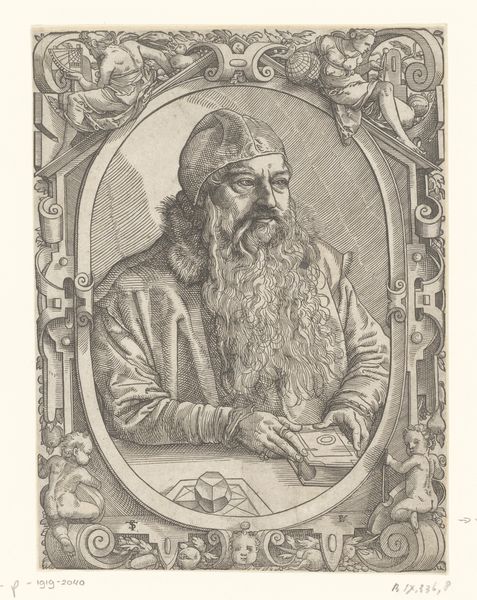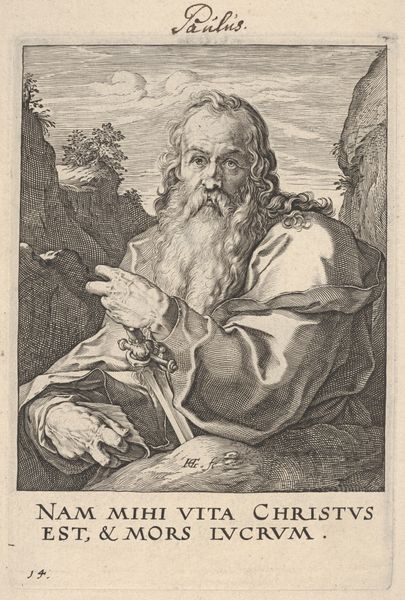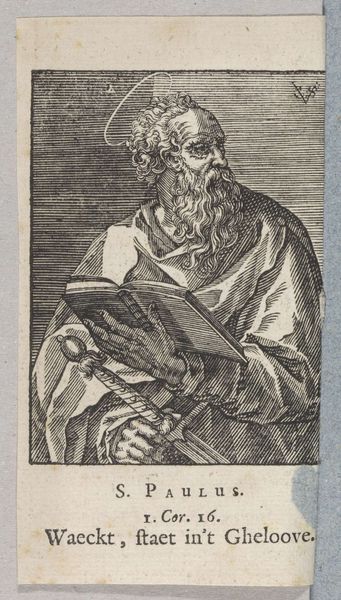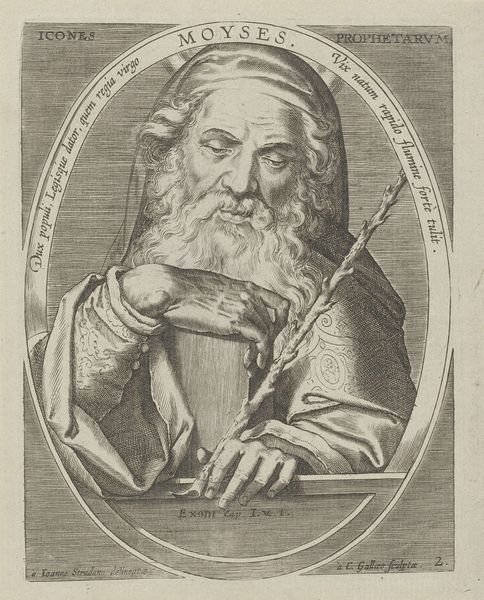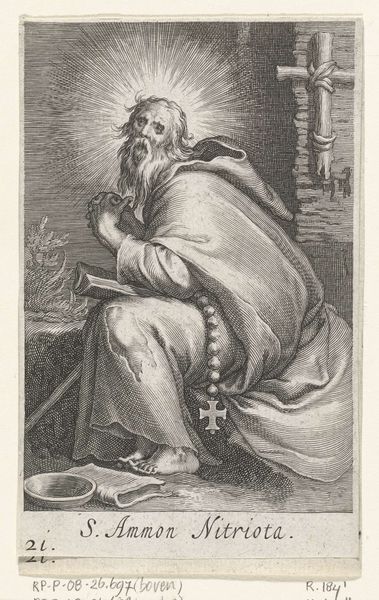
Portrait of Baccio Bandinelli, in three-quarter length next to a window pane containing a statuette and statuette fragments, the artist grasps with his right hand the head of a statuette resting at his left side 1535 - 1545
0:00
0:00
drawing, print, sculpture, engraving
#
portrait
#
drawing
# print
#
figuration
#
sculpture
#
men
#
italian-renaissance
#
engraving
Dimensions: Sheet (Trimmed): 11 9/16 × 8 3/8 in. (29.4 × 21.2 cm)
Copyright: Public Domain
Editor: Here we have Niccolò della Casa's "Portrait of Baccio Bandinelli," created sometime between 1535 and 1545. It’s an engraving, so a print, depicting the sculptor Baccio Bandinelli. The thing that really jumps out at me is the intensity of his gaze—brooding even. What do you see in this portrait? Curator: Oh, absolutely, he’s not exactly radiating sunshine, is he? I’m immediately struck by the *layering* – look at how della Casa nests Bandinelli amongst his sculptures, almost framing him with his own creations. And the window motif? It’s not just decoration. Renaissance portraits often used windows to suggest a world beyond, an intellectual space. Bandinelli’s almost *stuck* in this space – grappling with his work, which seems unfinished. He's in the midst of the messy creation of the sculptures which also appear on the windowsill. Editor: I didn't really think of him as "stuck". Curator: Well, maybe 'absorbed' is a better word! Look at his hands - they are the working hands that are working and reshaping art. He is deep in the weeds! What does that bring to mind for you? Editor: The physical act of sculpting…the struggle of creation? It seems like he is laboring, both mentally and physically. Is that scallop shell necklace anything in particular? Curator: Good eye! That’s the symbol of Saint James, suggesting Bandinelli may have made a pilgrimage. Perhaps this ties into a deeper spiritual meaning, relating to journeys of self-discovery or the burdens that sculptors shoulder with each and every cut? This work invites more and more speculation the deeper we get! Editor: Wow, I never would have picked up on the pilgrimage aspect just from that detail! So, it's more than just a portrait, it's almost like a character study with religious undertones? Curator: Precisely! Art during the Renaissance was often so tightly intertwined with social, political, and religious currents. Each element acts like a breadcrumb, if we let it! It has truly been enlightening exploring this engraving in your company. Editor: I totally agree, thank you so much for your insights. Now, I can look at all Renaissance portraits with a new vision.
Comments
No comments
Be the first to comment and join the conversation on the ultimate creative platform.
